
CSI: NY – The Game
Written by: Rik
Date posted: March 29, 2013
- Genre: Adventure
- Developed by: Legacy Interactive
- Published by: Ubisoft
- Year released: 2008
- Our score: 4
Okay, so we said there’d be no more CSI on FFG. But, here we are, covering the game of the third spin-off, CSI: NY, also known as ‘the one with Gary Sinise in it’. I guess it’s been long enough since we last covered the series for one of us to have a change of heart, although I can’t honestly say exactly what prompted it. Still, I don’t suppose my motivation is of much, if any, interest to you, dear reader, so let’s move on, shall we?
By 2008 responsibility for the games based on the main franchise had passed to the generally safe hands of Telltale Games, who brought us the passable CSI: 3 Dimensions of Murder and the [review/adjective not found] CSI: Hard Evidence. The first of these titles did at least represent a small step up from the dreary efforts served up by 369 Interactive, which included a game based on the ludicrous Miami version of the show. CSI: NY – The Game brings a third developer to the party, in the form of Legacy Interactive, who have previous (and, indeed, er, future) when it comes to tie-ins, with their CV including a number of Law and Order games (which I might get to one day) and even a couple of unlikely Murder, She Wrote spin-offs (which I hope to God never become of interest).
If you’ve followed my obsessive and largely fruitless quest to extract fun from a CSI game, you’ll be familiar with my assertion that the humble DS has brought us the most authentic and enjoyable experiences thus far, in the form of CSI: Deadly Intent – The Hidden Cases and – to a lesser extent – CSI: Unsolved!, and that the big-screen desktop efforts could do with taking a leaf out of their book. Based on what I’d read about CSI: NY – The Game, it seemed a likely candidate: cartoony presentation, streamlined gameplay and mini-game puzzles hinted at an attempt to replicate the more successful approach of the handheld games, and as such, I came to it with a small amount of hope and optimism.
The differences from previous PC efforts are immediately apparent. Instead of attempting accurate 3D likenesses, the graphics take more of a comic-book angle. Characters and backgrounds are almost completely static, and although the team are voiced by the actors from the show (with varying degrees of effort), there’s no attempt at lip-synching or other movement – you just get an image of the person who’s talking popping up over the background.
Examining your first scene reveals some variation in gameplay too. Instead of scanning the scene for areas or items of particular interest, as in previous efforts, you’re required to search for a list of objects which are displayed as blurred silhouettes in the control panel at the bottom of the screen and gradually come into focus over time. In this sense, it has something in common with the ‘hidden object’ games of the type that you normally find on sale in Morrisons, and this might be off-putting to some – in which case, feel free to scream “OMG casual!!!!” and go back to playing your manly Gears of War games. Although it makes most crime scenes appear as if they’ve had a lorry-load of rubbish tipped over them (there’s a surfeit of incongruous items, with roller-skates and banana skins appearing in unlikely places), and there’s no reason for you to click on most of the items, other than ticking them off a list, in truth it’s as effective a representation of the drudgery of picking through a scene as clicking on a screen in the hope of finding one of a handful of hotspots.
When you do click on something relevant to the investigation, the game becomes more CSI again, and you’ll be presented with one of a number of puzzles or mini-games. If you’re dealing with evidence, then you’ll need to take pictures of the relevant areas of the scene, collect blood by tracing around it with the mouse, or dust for prints. At other times, you might be presented with a combination to crack or a word puzzle, to access a safe or a computer’s hard drive.
Back at the lab, mini-games abound. Some of them, such as putting together a fingerprint from a set of partials, have been done before in previous games, but here you’ll also perform sample analysis (sorting science-y looking shapes) or enter into a little ‘spot the difference’ by comparing a victim’s x-ray against a ‘normal’ one, or something similar. At other times, you might need to pick key words out of an e-mail or website article.
The other main aspect of the game is interrogation. A witness or suspect will make a statement and key phrases will be underlined, prompting you to ask further questions on that topic. You can also present evidence that you’ve collected, and if it’s relevant, then you’ll get more information. If it isn’t, you run the risk of damaging your credibility. Helpfully, a couple of progress bars indicate how much more there is to find out, and how much credibility you have remaining. Presumably, once your credibility runs out, the witness leaves and it’s game over.
I say ‘presumably’, because not only did it never happen to me, I can’t really imagine a set of circumstances under which you could get it so wrong that this could occur. I suppose, if you were doing it deliberately [Say, for the purposes of a thorough and helpful review, for example? – FFG reader] then it might be possible, but in general I found that, even when the script indicated a character was unhappy with some irrelevant questioning, it didn’t have any detrimental effect on the credibility meter.
And in general, CSI: NY – The Game is extremely easy, posing negligible challenge to even slow-witted and half-hearted gamers such as myself. I managed to polish the whole thing off in a couple of afternoons without getting stuck for any significant period of time. The puzzles and mini-games are usually pretty simple, you can’t travel from one location to the next until you’ve done everything you need to, and you’re never stuck in terms of not knowing what to do.
In fact, pretty much the only time I ever experienced any difficulty was when the game took a rare opportunity to employ generic adventure-game staples, such as having to use an object on another object, without any warning. The first time this happened, I was completely flummoxed, and even using the in-game hint system didn’t help (although when you’re actually looking for an object you can’t spot, it’s less of a ‘hint’ and more of a ‘X marks the spot, here it is you bloody idiot’). I eventually figured it out, but there was no clue from the otherwise ubiquitous in-game guidance (or the 3-page manual) that combining objects would be a part of the game.
The other main challenge comes from not being able to figure out what the silhouette of the object you’re meant to find actually is. Tall, thin objects, in particular, are hard to distinguish from each other, and there are always red herring items to distract you, so you might be clicking on pens and screwdrivers when you actually need a tie or a broom handle. Still, you can always use the hint system described above to take you straight to what you’re missing, if you need to.
Essentially, you’re watching a CSI story unfold, punctuated by interactive bits that make you feel as if you’re helping to solve the case. To be honest, I don’t have a massive problem with this in itself, and I think it helps the game to have it all rattling along at a good pace. The bits you do have to do are just taxing enough to make you feel as if you’re doing something – lab work, in particular, seems to have been designed to transport you into one of the show’s music-montage bits where the actors do stuff in the lab while wearing an expression of vague concentration. It’s just hard enough to stump you for a few minutes, but, like in the show, the solution is never far away. And while some of the mini-games are quite contrived (lots of combination locks seem to use symbols, for example), others actually do quite a good job of representing a simplified version of the task at hand: I particularly liked the x-ray/organ comparison tasks in the morgue – it seems like something that might happen in the show, at least.
Some effort has been made to replicate the overall CSI experience, too. The graphical style is actually rather effective, and in most cases the characters look more like their real-life counterparts than in the other CSI games. The opening credits are recreated (for every case!) and although there’s no Baba O’Riley, there’s some vaguely similar-sounding generic rock that plays while the characters are introduced. In another departure from the series, you actually play the game as either Mac or Stella rather than a wet-behind-the-ears rookie, and work with all of the team on each case (previously, you worked with one CSI at a time, pretty much). The stories are all fairly interesting, too, especially the fifth and final case (not shipped with the game but, at the time of writing, downloadable from the Ubisoft website) which involves one of the main characters coming under suspicion, and that’s not something that you can always take for granted, even with the TV show’s writers on board.
Having said all of this, though, as a game, CSI: NY – The Game is pretty piss-poor. The gameplay is extremely simplistic and you don’t ever seem to be punished significantly for being sloppy or making mistakes. On top of that, the production values leave something to be desired: the video clips used for the opening credits and flashback sequences (pretty much the only moving parts in the game) are grainy, choppy and cheap-looking; the same objects are re-used over and over again in each crime scene; and for some reason, collecting blood with a swab is accompanied by what sounds like an aerosol being sprayed. This is one of the more recent games we’ve covered on FFG, but it could easily have been made in 1998 rather than 2008.
Slightly raised hopes that CSI: NY – The Game might be better than previous PC offerings notwithstanding, it’s fair to say that I don’t usually approach the CSI games with massively high expectations. That another one fails, even with the bar set so low, is disappointing. It’s not the worst I’ve played, and it sort of works while it lasts, but with a little more effort in one or two areas, it could have been so much better. So, the search for a decent tie-in continues. Or perhaps I should just give up.

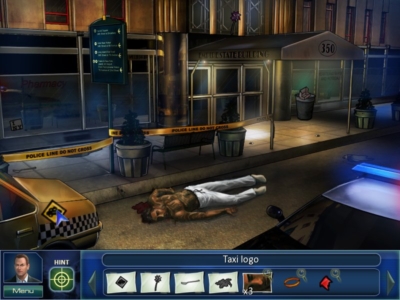
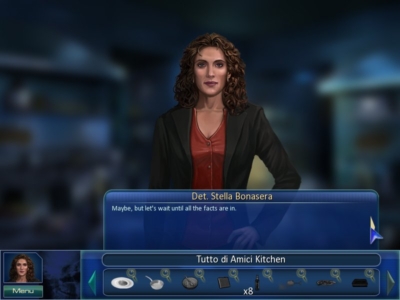
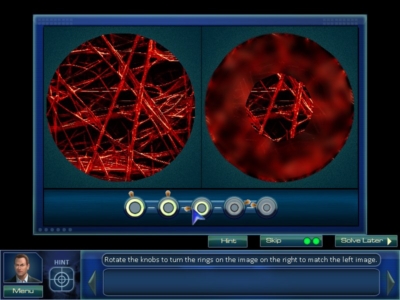
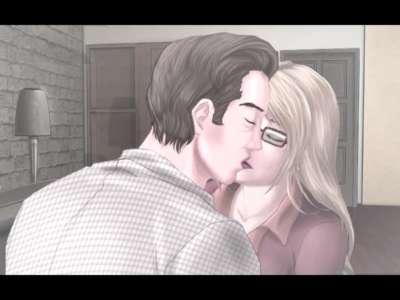
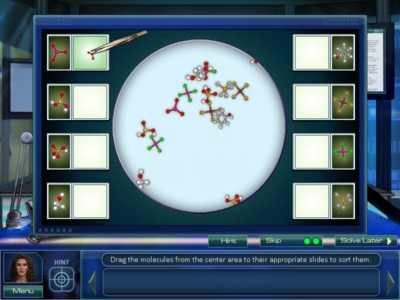
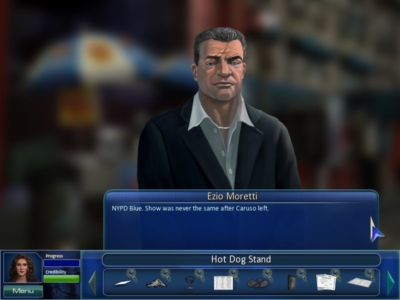

 Posts
Posts